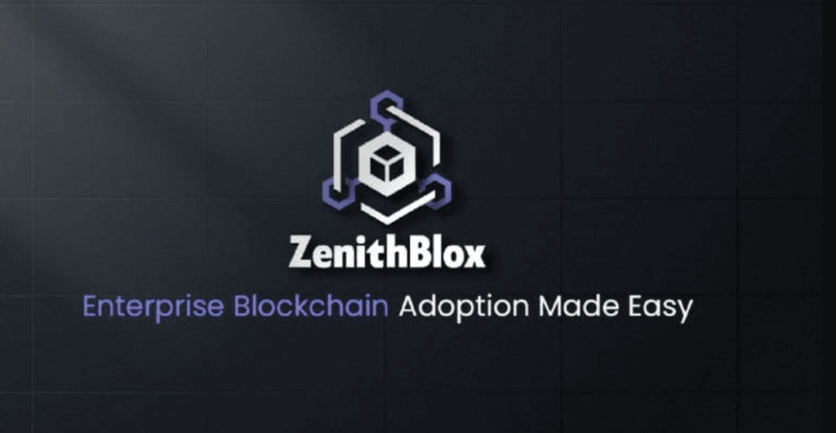
In the blockchain world, hype burns bright and fades quickly. Token launches dominate headlines, fortunes swing on speculative coins, and then attention moves elsewhere. What remains after the noise is a more stubborn problem: the lack of deep integration into the financial systems that actually move the world's money.
ZenithBlox is focused on solving that gap. From offices in Canada and Morocco, the company is building the infrastructure to connect blockchain directly into core banking systems and even national platforms.
Founder Fodé Touré, PhD, speaks with the calm precision of someone who has seen the industry's highs and lows. His background blends technical depth and financial pragmatism: a doctorate in computer science, blockchain innovation training at MIT Sloan, and years working with both major banks and blockchain infrastructure companies. Over time, he noticed the same pattern. Banks were intrigued by blockchain's promise but ran into technical complexity, regulatory uncertainty, and integration costs that killed momentum.
"The best way to facilitate blockchain adoption is to use what they already know," Touré says. "Don't come with something that increases the complexity of the solution."

From Concept to Implementation
One of the first barriers Touré encountered was what he calls the "toolkit problem." Many blockchain vendors hand over APIs or SDKs and expect banks to rebuild their systems from the ground up. Compliance is often left to the client, adding time, expense, and risk.
In banking, speed matters. Missing a launch window can mean losing a market entirely. ZenithBlox's solution is a no/low-code platform that fits into existing operations and automates both technical and compliance layers.
Its core is BloxBlueprint, a visual workflow tool based on BPMN 2.0, a modeling language many banks already use. The BPSC Compiler transforms those diagrams into executable smart contracts. The FrontierBlox Engine lets compliance teams add KYC, AML, or jurisdiction-specific rules without writing code. Universal Adapters connect legacy Web2 systems to modern Web3 protocols.
"You don't need to be an expert," Touré says. "If you know what you want to do, you just draw it... click a button, and we execute everything for you."
An Industry Shifting Toward Readiness
The timing is strategic. The World Economic Forum projects that by 2030, up to 10 percent of global GDP could operate on blockchain. The Bank for International Settlements reports that more than 90 percent of central banks are exploring CBDCs or blockchain-based settlement systems. Tokenized real-world assets—from sovereign bonds to high-value real estate—are moving from pilot projects to commercial products. Boston Consulting Group estimates the RWA market could reach $16 trillion by the end of the decade.
These developments create demand for infrastructure that can connect the old and the new without forcing a full rebuild. Touré sees ZenithBlox as a way to shrink the gap between concept and launch.
National Ledgers and Fractional Assets
While some blockchain companies focus on hypothetical use cases, ZenithBlox is already in advanced discussions. "With this solution, we can reduce the go-to-market time from 12 months to mainly two months, or even one," Touré says. "We take all the business processes they have and generate smart contracts automatically."
The same approach works for smaller-scale initiatives. It can turn real estate into fractional shares to unlock liquidity, digitize bonds for broader investor access, or enable regulated institutions to deploy compliant DeFi products.
Keeping a Distance from Speculation
Touré is clear about where ZenithBlox stands.
"Cryptocurrencies are just a use case of blockchain," he says. "In our ecosystem, we don't have any cryptocurrency, but we give people the possibility to build flows that connect Web2 services with their crypto if they want to."
This flexibility means a conservative bank can use the platform for internal settlement and compliance only, or choose to incorporate tokenized assets later, without locking itself into a single protocol.
Competing in a Crowded Field
Blockchain middleware is competitive, but ZenithBlox combines three elements that few others offer:
- A no/low-code interface in a language banks already use
- Compliance tools that let non-technical staff embed regulations into contracts
- Cross-protocol compatibility with Ethereum, Hyperledger, Polkadot, and others
That makes it relevant to both a central bank planning a national ledger and a commercial bank looking to streamline back-office processes.
A Global Perspective
Touré's outlook is shaped by a career across continents. Born in West Africa, educated in Morocco and Canada, and tested in the U.S. fintech sector, he has founded Orun AI and co-founded The African Fund, the first blockchain-enabled venture fund in Africa. His focus has consistently been on cross-border, real-world applications rather than chasing short-term hype.
The Regulatory Push
The International Monetary Fund has urged emerging markets to use blockchain for greater transparency and lower costs. In Europe, the Markets in Crypto-Assets regulation will come into force in 2025, raising compliance requirements and increasing the value of ready-made solutions.
"If I want to sell my solution to someone, I take two angles," Touré says. "Cost reduction to optimize your process and save money, or increasing your revenue by accelerating your go-to-market or creating new products. In addition to that, you have security and transparency—that comes with the technology."
Quiet Builders in a Loud Market
If blockchain is going to become part of financial infrastructure, the companies that succeed will be the ones that make adoption practical, not just visionary. ZenithBlox's bet is that by making blockchain implementation look like an upgrade rather than a risky leap, it can be one of those companies.
In a space that often rewards noise, building quietly but effectively may turn out to be the most disruptive move of all.
ⓒ 2025 TECHTIMES.com All rights reserved. Do not reproduce without permission.




